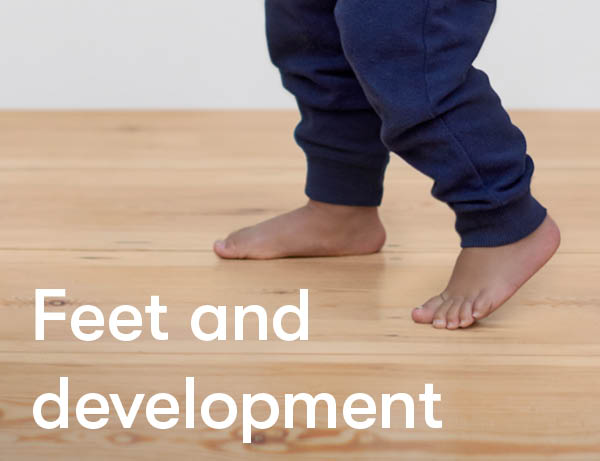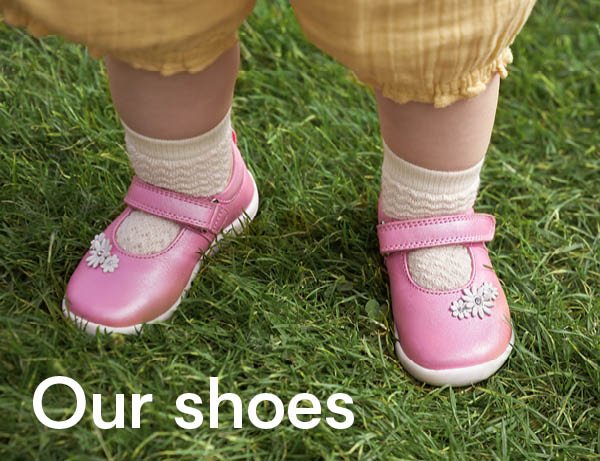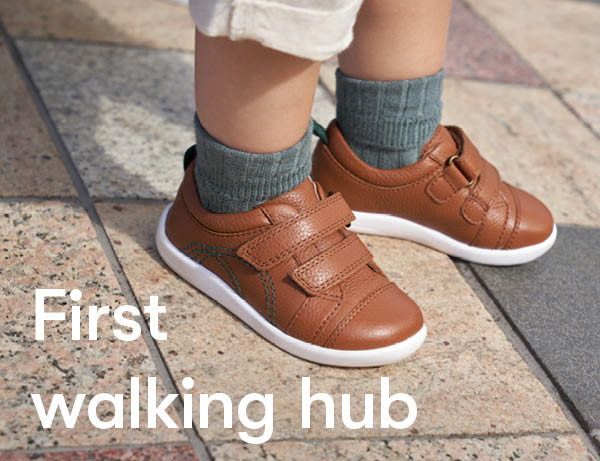Niggle-free comfort
• Padded ankles and insoles provide cushioning and prevent rubbing
• Minimal seams reduce the number of areas that could rub the foot and cause blisters or discomfort
• Ultra-flexible lightweight soles that allow natural, easy movement
• Shoes that are made using breathable materials, such as leather, to help keep feet fresh, dry and healthy all day long
• Adjustable fastenings ensure a comfortable fit for chubby little feet.
Intelligent protection
• Bumpers at the toe and heel protect tiny toes from stumbles and falls whilst also protecting leathers against scuffs keeping shoes looking good for longer
• Shoes should have been rigorously tested from development through to manufacture to ensure they will endure mini adventures
Child-specific precision fit
• Whole and half sizes will allow you to get a better fit for your little explorer
• Measure your child’s feet to get the correct width fitting to ensure the most comfortable fit
• Child specific lasts are specifically developed for the shape and different growing stages of a child’s foot, and will support their ongoing healthy development
• Shoes with specifically designed built-in growing room not only fit well but last longer
How to measure
You can measure your child’s feet in the comfort of your own home or visit a store with trained fitters. For measuring under 3’s at home we recommend using our small measuring gauge. It's simple to use and takes the stress out of measuring wriggly feet.
How to check shoes fit
As measuring is only a guide, it’s important to check shoes fit correctly, especially as your little explorer may not notice any discomfort at this age. Follow our quick and easy steps to check the fit once your new shoes arrive.





